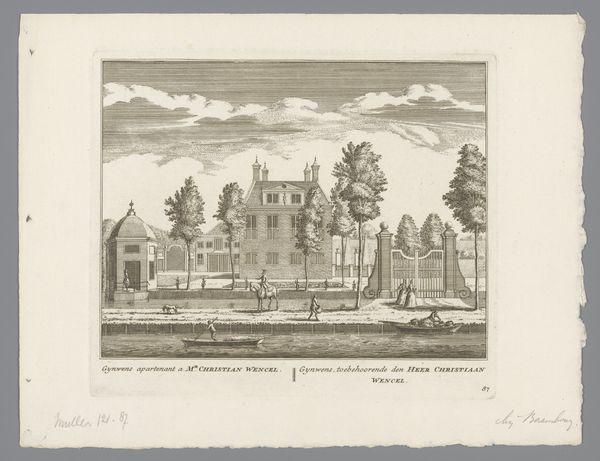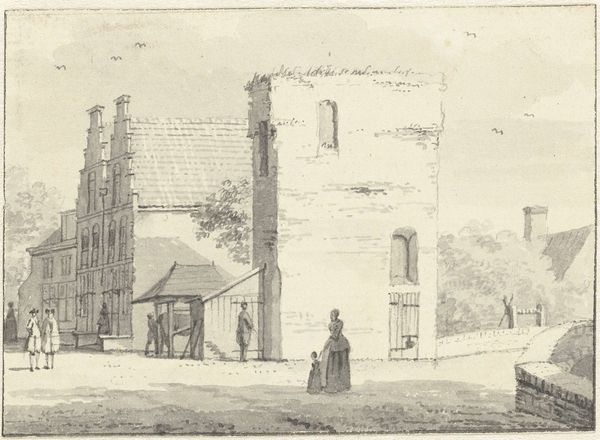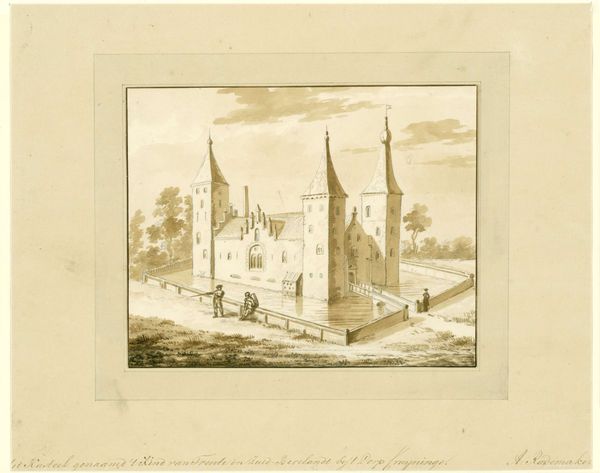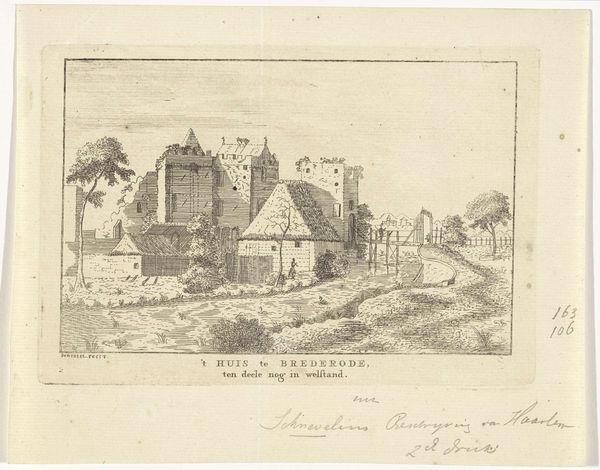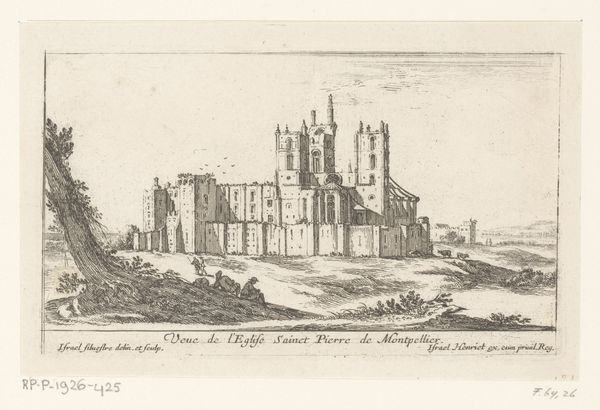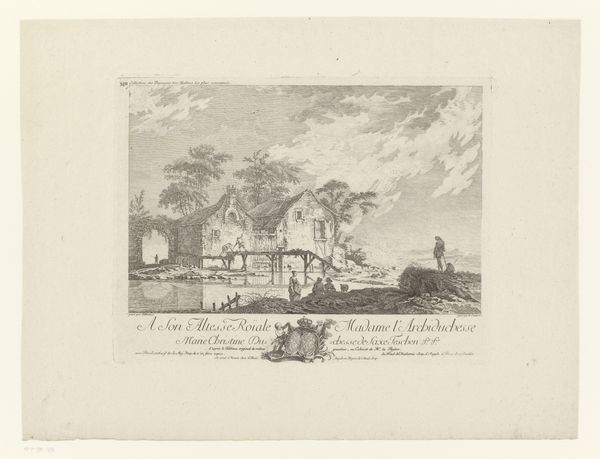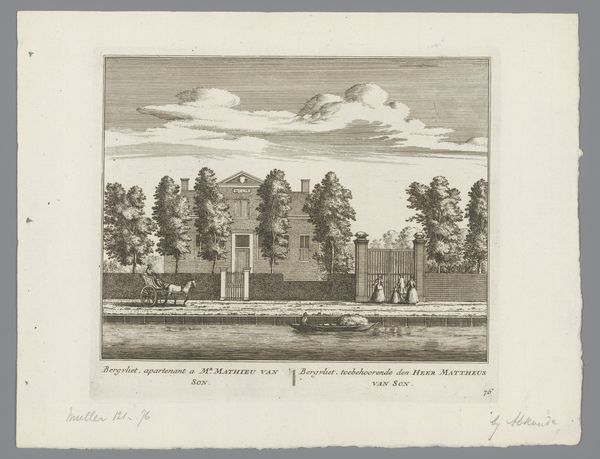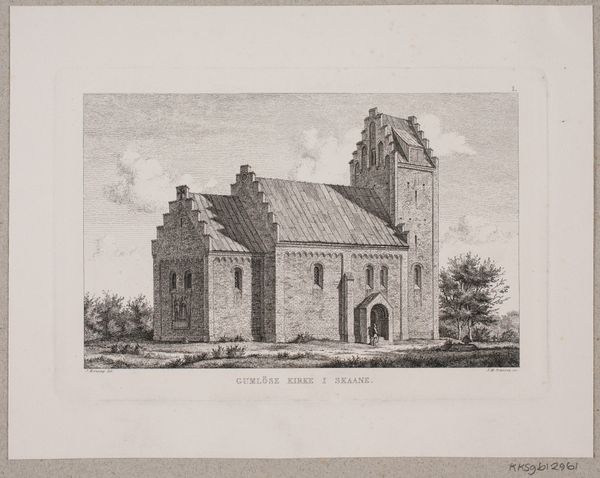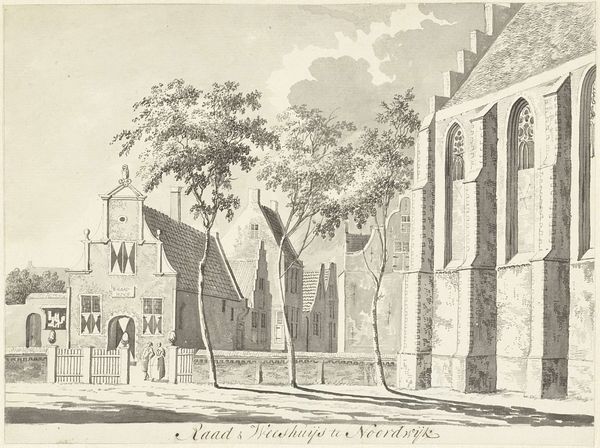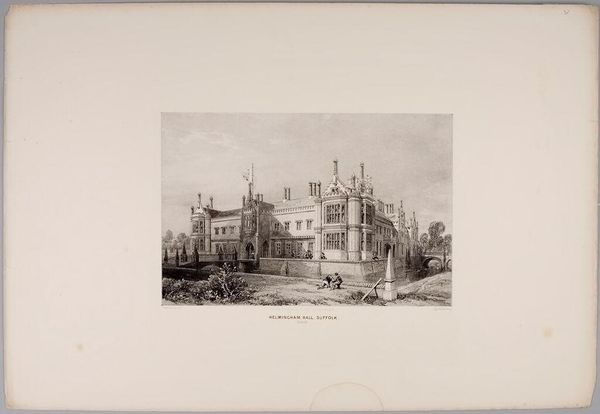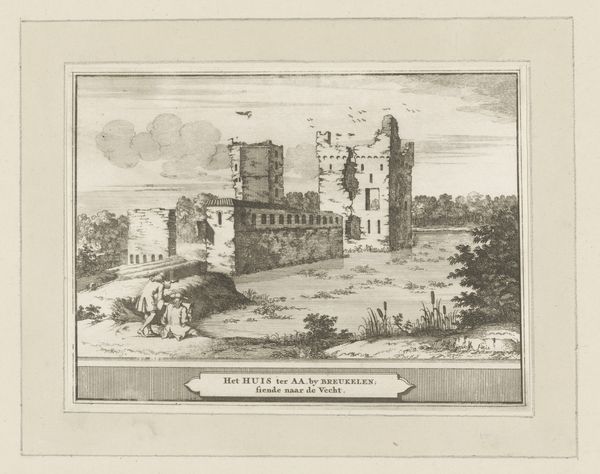
drawing, paper, engraving
#
drawing
#
landscape
#
paper
#
romanticism
#
engraving
Dimensions: height 263 mm, width 345 mm
Copyright: Rijks Museum: Open Domain
Curator: This is J.J. Cöntgen’s engraving from around 1830, titled “Ruïnes van het entrepot, 1830," depicting the ruins of the Entrepôt in Antwerp. It’s currently held in the Rijksmuseum collection. Editor: My first impression is one of quiet melancholy. The pale light, the crumbling architecture—it evokes a strong sense of loss, even abandonment. Curator: Absolutely. Cöntgen’s use of engraving allows for meticulous detail. Note how the crisp lines emphasize the textures of the ruined stone and brick. One can almost feel the dust and debris underfoot. Editor: The ruined architecture immediately catches my eye. What kind of symbolism are we seeing? The warehouse reduced to rubble must say something about transience. Curator: It does. Beyond the purely representational, the Entrepôt was once a bustling center of trade and commerce. Its destruction, part of the Belgian Revolution, underscores the fragility of human endeavors and the impact of socio-political change on the landscape. Editor: Look at the figures dotted throughout the scene. They seem dwarfed by the ruins, further emphasizing human insignificance in the face of time and destruction. Curator: Indeed. The contrast in labor of subjects shown is noteworthy, further telling the story about loss and progress during this particular era of revolution in Belgium. Some appear to be picking through rubble; others are simply observing the scene, possibly reflecting on the damage of human hands or the inevitable decline of structures created for industry and commerce. The material transformation shown reflects societal shifts in this post-war period. Editor: There's a clear romantic fascination with ruins here, reminiscent of Piranesi. These shattered arches and crumbling walls become monuments in themselves, pregnant with historical weight and symbolic power. Curator: And that tension—between destruction and artistic preservation—is key. This work, rendered with labor-intensive precision in a fragile paper matrix, elevates what was once commonplace material to the sublime. Editor: Considering Cöntgen's attention to details both structurally and symbolically, I find myself thinking more deeply about the cyclical nature of progress. Curator: It makes you consider how we, today, build our societies atop the literal and metaphorical ruins of the past. Editor: I concur. The layers of meaning within the lines are richer than I had expected.
Comments
No comments
Be the first to comment and join the conversation on the ultimate creative platform.
